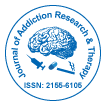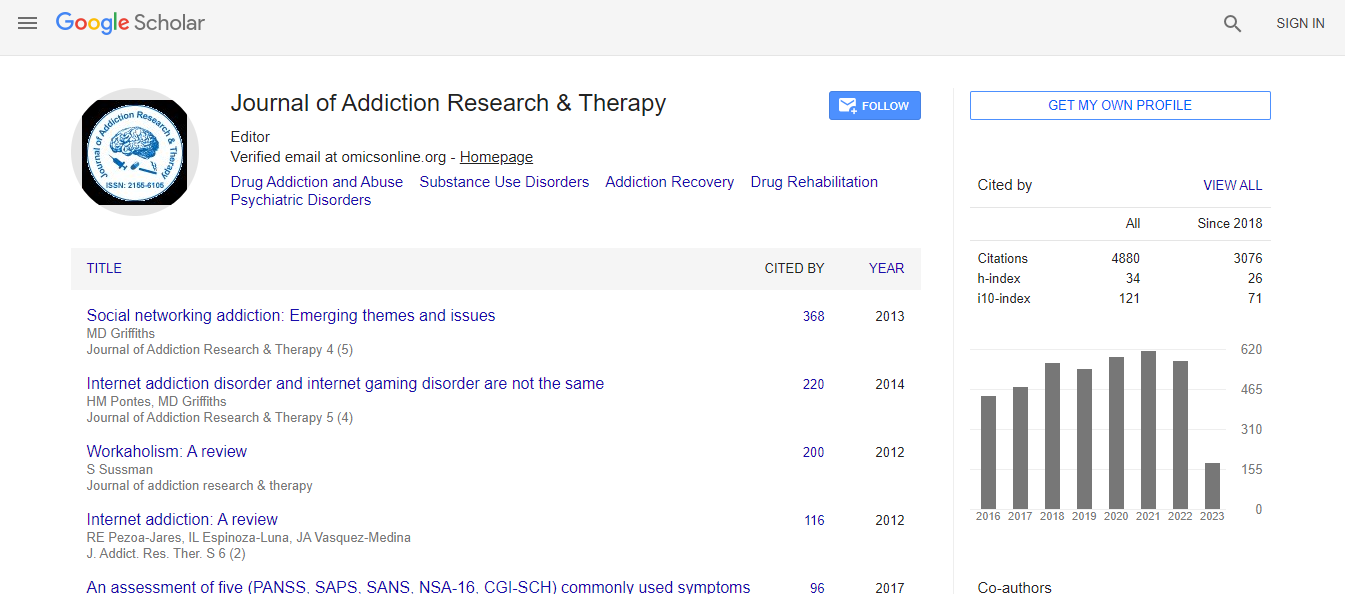Our Group organises 3000+ Global Conferenceseries Events every year across USA, Europe & Asia with support from 1000 more scientific Societies and Publishes 700+ Open Access Journals which contains over 50000 eminent personalities, reputed scientists as editorial board members.
Open Access Journals gaining more Readers and Citations
700 Journals and 15,000,000 Readers Each Journal is getting 25,000+ Readers
Google Scholar citation report
Citations : 4859
Journal of Addiction Research & Therapy received 4859 citations as per Google Scholar report
Journal of Addiction Research & Therapy peer review process verified at publons
Indexed In
- CAS Source Index (CASSI)
- Index Copernicus
- Google Scholar
- Sherpa Romeo
- Open J Gate
- Genamics JournalSeek
- Academic Keys
- JournalTOCs
- SafetyLit
- China National Knowledge Infrastructure (CNKI)
- Electronic Journals Library
- RefSeek
- Hamdard University
- EBSCO A-Z
- OCLC- WorldCat
- SWB online catalog
- Virtual Library of Biology (vifabio)
- Publons
- Geneva Foundation for Medical Education and Research
- Euro Pub
- ICMJE
Useful Links
Recommended Journals
Related Subjects
Share This Page
Mechanisms of pain and opioid pharmacology
5th International Conference and Exhibition on Addiction Research & Therapy
Thersilla Oberbarnscheidt and Norman S. Miller
Michigan University, USA University of Florida, USA
ScientificTracks Abstracts: J Addict Res Ther
Abstract
Opioid-induced hyperalgesia (OIH) is a very common consequence of pain management with opioids. Characteristics of OIH are worsening pain over time despite an increased dose of the opioid. It is often recognized neither by the physician nor the patient, and it results in increasing doses of opioid medications and continued unsatisfying pain levels experienced by the patient. The increased use of narcotics has a negative impact on patient outcome, as patients suffer from increased pain levels and often develop depression. Patients with OIH require frequent assessment for aberrant behaviors as an indicator of addictive use. Opioid-seeking behavior may complicate the clinical picture of failed opioid therapy. The treatment of OIH is to discontinue the opioid medication and to treat the patient├ó┬?┬?s withdrawal symptoms, if necessary, in an inpatient setting with medical monitoring.Biography
Thersilla Oberbarnscheidt is a resident psychiatrist at Central Michigan University, Department of Psychiatry, College of Medicine, MI, USA. Thersilla got her medical degree from the Christian-Albrechts-University in Kiel, Germany and did her 4th Year medical training at Yale University, School of Medicine in New Haven, CT, USA. She received her PhD in Neuroscience from the Christian Albrechts- University in Kiel, Germany. Her thesis was on Phenazone in the treatment of the acute migraine attack. Cephalalgia. Efficacy of phenazone in the treatment of acute migraine attacks: a double-blind, placebo-controlled, randomized study.
Email: Oberb1t@cmich.edu

 Spanish
Spanish  Chinese
Chinese  Russian
Russian  German
German  French
French  Japanese
Japanese  Portuguese
Portuguese  Hindi
Hindi 
